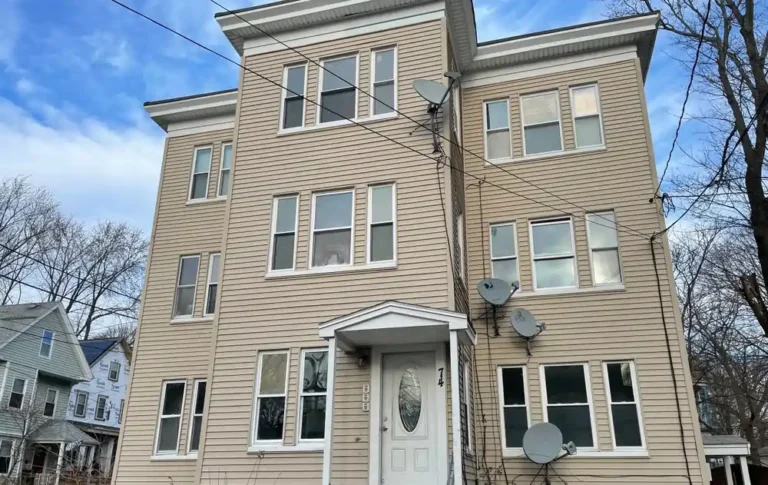
You can plant a deciduous tree in front of your south-facing windows for more energy saving. The tree will block sunlight in the summer but lose its leaves how to be more environmentally friendly at home and allow the sunlight in during the winter. The sun is higher in the summer than in the winter so a roof overhang can block the sun in the summer. In the winter, the sun will be at a lower angle and not blocked by the overhang.
Use greener methods to clear drains
Urban dwellers might find more options but often at specialty stores that may not be conveniently located. In the modern quest for sustainability, technological advancements play a pivotal role. From the way we power our homes to the vehicles we drive, innovation is constantly reshaping our approach to eco-friendliness. Let’s explore some of these groundbreaking technologies and how they can be seamlessly integrated into our daily lives. Eco-consciousness is deeply rooted in understanding the fragile balance of our ecosystems and the far-reaching impact of our choices. It’s about seeing the bigger picture – how our actions, no matter how small, collectively affect the health of our planet.
Buy products without packaging wherever possible

Recover your throw pillows by repurposing old curtains or that groovy patterned shirt that you love but can’t quite pull off. Peeling away the layers of past renovations can reveal original features like exposed brick or millwork that can add character to the space with a little TLC. Refinish rather than replace old hardwood floors, or if they’re too banged up, consider painting them for a Scandinavian-inspired look. Choose low or no VOC paint from companies like Clare Paint, founded by interior designer Nicole Gibbons. Or consider a natural clay plaster wall finish from British company Clayworks that blends unfired clays mixed with minerals and natural pigments to create a sustainable wall paint alternative. “While cooking with fossil gas was once considered the best way to prepare gourmet meals, induction stoves are now seen as superior, including as a strategy to reduce use of fossil fuels,” says Moore.

Recycle contact lenses and packaging
- But, besides benefitting the environment, going green also can improve your quality of life.
- Engage in sustainable hobbies like birdwatching, soap making, hiking, or nature photography to connect with the environment.
- Build a sustainable house by starting with the right sustainable house design plan.
- Adopt eco-friendly parenting practices like cloth diapering and using natural baby products.
- If a whole 40 tips seems like a lot to take in, then here’s a short list of 7 simple tips that cover each of the main areas we focus on throughout this article.
- Simply add more bins, especially near every trash can, and clearly label them.
- It is also critical to maintain clean windows along with functioning window coverings to let in as much light as possible.
Consider the realistic progress you can make today, what you can add tomorrow, and what to aim for in the future. Here’s a checklist to get you started as you tackle new projects around the house this season and beyond. You’ll be recycling perfectly usable items, you’ll be supporting your local economy, and you’ll be saving money. Repurpose old towels https://ecosoberhouse.com/article/opioid-addiction-treatment-recovery-is-possible/ and t-shirts and cut them into small cleaning cloths.
- Learning how to preserve it by freezing and canning is also great.
- You should worry both about the packaging and ingredients to avoid in skincare, both of which are bad for you and the planet.
- We curate high-quality and sustainable products and aim to inspire our readers to join us in creating a positive global impact.
- But could you improve your recycling-ability (now a word)?
Switch to a green energy tariff

Homeowners can increase their energy efficiency by modifying heating and cooling systems based on their unique demands and schedules. Electronic waste, or e-waste, encompasses any unwanted electronic equipment including old computers, televisions, smart phones, and used cables. These contain toxins such as mercury, lead, beryllium, and arsenic, which can be harmful to the environment and our health. Some parts that make up electronics (steel, copper, iron, glass) can be recovered and made into new items, so they Twelve-step program must be disposed of properly—don’t throw them in the trash! To help reduce e-waste, keep electrical products for at least seven years, or donate them when you’re done. Double-pane windows help keep cold air out in the winter and heat from the sun out in the summer.
- Even your windows can be made more sustainable with recycled curtains.
- Light bulbs have been one of the most significant sources of energy consumption over time.
- Consider using manual push mowers or electric mowers for larger areas.
- Take a minute to consider how many plastic cartons of milk you buy each month… now, perhaps it’s time to go old-school and book a weekly delivery from the milkman?
- When it comes to decor, before you buy anything new, evaluate what you already have.
- It may be tempting to purchase cheaper options, but products made of quality, sustainable fabrics and materials are both more ethical and last longer.
- Broken down into the categories below, you’re sure to find eco-friendly tips you can start implementing today.
- You can help reduce your carbon footprint as you travel by flying fuel-efficient airlines.
- Ask them what “green” pension options they have that better align with your interests,” advises Tony Burdon, CEO, Make My Money Matter.
These are all organizations that ensure the food is produced using sustainable agriculture practices in safe and healthy working conditions. Whether you need to get rid of old clothes, electronics or other household items, it’s easier than ever to sell your old and unwanted stuff. That’s because there are so many online marketplaces where you can safely reach people who are seeking the exact things you’re hoping to bid goodbye. While this is enough to induce climate anxiety in anybody, taking steps to live more sustainably on a daily basis and spreading this message to your community can help soften the blow.

Fresh food usually travels about 1,500 miles before we purchase it. These long journeys result in emissions from transportation, refrigeration, and production. With smart decision making and reliable information resources, it’s easier to make sustainability something we can all enjoy and take part in.